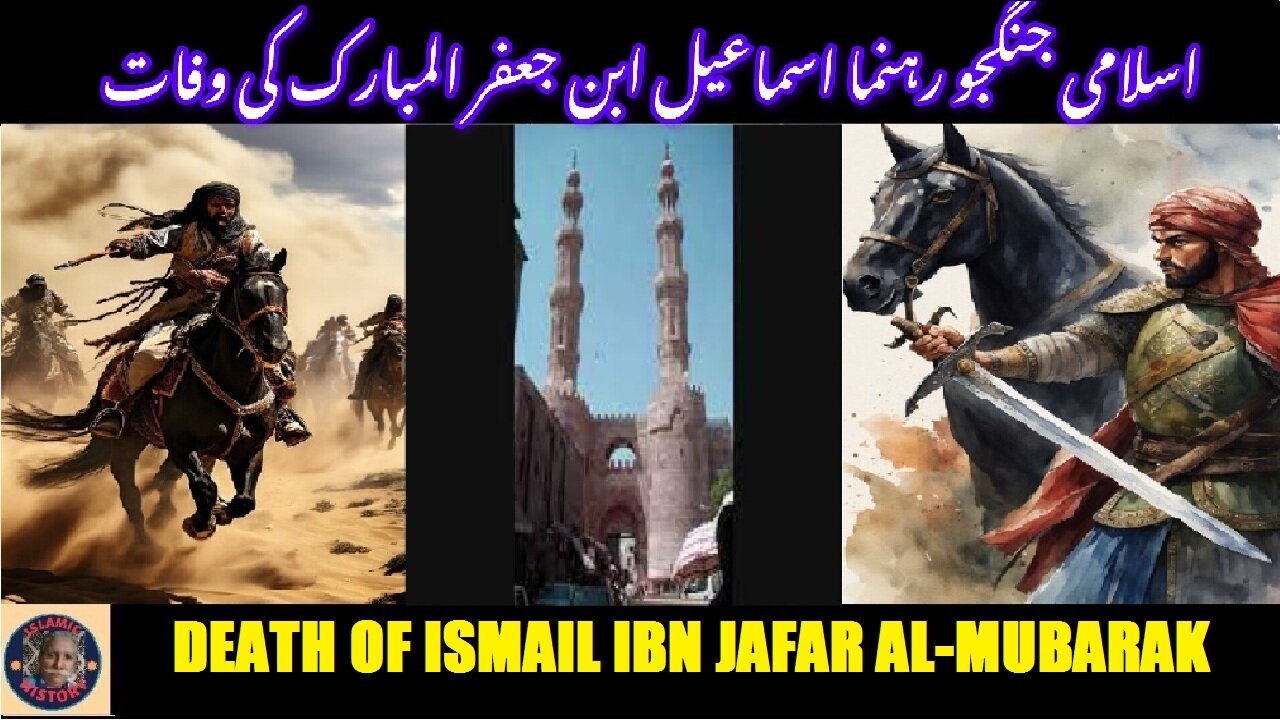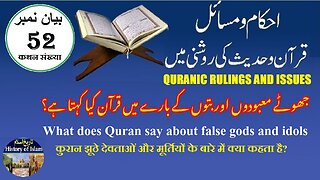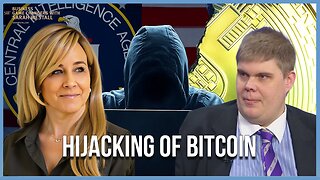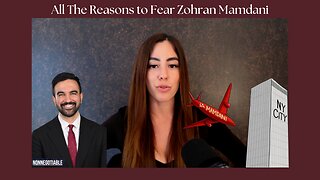Premium Only Content

Death of Ismail ibn Jafar al-Mubarak اسماعیل ابن جعفر المبارک کی وفات
@islamichistory813 #HistoricalFigures #IslamicWarriors #Legacy
Death of Islamic warrior leader Ismail ibn Jafar al-Mubarak
Dekhti Aankhooon aur sountay kaanoon ko Asslamoalaikum, sisters, brothers friends and elders, In this islamic warriors leaders insightful video, we are describing the death of Ismail ibn Jafar al-Mubarak, an influential Islamic warrior leader. Through a detailed analysis, we highlight his military achievements, the challenges he faced, and the repercussions of his demise on the socio-political landscape of his time. we are describing how al-Mubarak's legacy continues to resonate in contemporary discussions of leadership and valor.
The exact date and the circumstances of al-Mubarak's death also remain unknown. According to the Isma'ili tradition, al-Mubarak died in 158/775, and was buried at the Maqam al-Imam (lit.'the shrine of the Imam') in Salamiyah, a city located in Syria. However, non-Isma'ili sources report that he died in Medina, and was buried in the Baqi cemetery there.[48] The historians quote the tradition that al-Mubarak had died during his father's lifetime, but the followers of al-Mubarak refused to believe the rumours of his death.[49] Al-Shahrastani writes in Kit?b al-Milal wa al-Ni?al that, "Some of them [followers of Isma'il] say that he did not die, but that his father had declared that he had died to save him from the Abbasid caliphs; and that he had held a funeral assembly to which al-Mansur's governor in Medina was made a witness." Hasan ibn Nuh al-Bharuchi, an Indian Isma'ili author, relates visiting al-Mubarak's grave in 904/1498. His grave was still there in 1302/1885, but it was later destroyed, along with other graves in the Baqi, by the Wahhabis.
Many Isma'ili and non-Isma'ili sources state that during al-Mubarak's funeral procession al-Sadiq attempted to show the face of his dead son to witnesses. Some of the same sources also indicate that al-Mubarak was seen soon afterward in Basra, where he cured a paralytic in the market.
A crowd of men surrounded Isma'il, all greeting him, and asking for protection. When the cripple, who was a Shia, a follower of al-Sadiq, saw him, he began to shout: ‘O descendant of the Messenger of God, stretch thy hand to me so that God may stretch His to thee.’ The young man returned, seized his hand, and brought him down from his shop. Then the cripple walked along with him a distance, leaving him later, and returned to his place healthy and straight in stature. People began to crowd around him, asking him who it was who healed him. And he replied: ‘Isma'il ibn Ja'far ibn Muhammad.
Ja'far ibn Mansur al-Yaman, Asra al-Nutaqa
Another group claimed that he did not die but went into occultation, that he would appear again and would be the promised Mahdi. These Imami Shias further believed that al-Sadiq had announced al-Mubarak's death merely as a ruse to protect him from the persecution of the Abbasids who were angered by his political activities. The Twelver heresiographers al-Nawbakhti and al-Qummi call the members of this group, who recognised al-Mubarak as their Imam Mahdi, al-Isma'iliyya al-khalisa (lit.'the pure Isma'ilis'), while some later heresiographers such as al-Shahrastani designate this group as "al-Isma'iliyya al-waqifa" which refers to those who stopped their line of Imams with al-Mubarak. The Twelver theologian Muhammad al-Mufid (d. 1022) records that in his time they were extremely rare and there was no knowledge of anyone from them who could be pointed out.
so sisters brothers friends and elders, tomorow we are going to described Biography of Islamic Warrior leader Marwan-II. Allah hafiz
========================================
-
 9:05
9:05
ISLAMIC HISTORY
15 hours agoWhat does Quran say about false gods & idols جھوٹے معبودوں اور بتوں کے بارے میں قرآن کیا کہتا ہے
5 -
 LIVE
LIVE
Man in America
6 hours agoEXPOSED: What the Vatican, CIA, & Elites Are HIDING About True Human Potential
1,058 watching -

Barry Cunningham
3 hours agoJOIN US FOR MOVIE NIGHT! TONIGHT WE FEATURE THE MOVIE RFK LEGACY!
26.3K11 -
 1:13:42
1:13:42
Sarah Westall
4 hours agoHow Bitcoin was Hijacked, Palantir is a Deep State Upgrade & more w/ Aaron Day
11.7K3 -
 15:59
15:59
ArynneWexler
6 hours agoAll The Reasons You're Right to Fear Zohran Mamdani | NN6
2.32K1 -
 LIVE
LIVE
Side Scrollers Podcast
10 hours ago🔴FIRST EVER RUMBLE SUB-A-THON🔴DAY 4🔴BLABS VS STREET FIGHTER!
909 watching -
 LIVE
LIVE
DLDAfterDark
2 hours agoGlock's Decision - How Could It Impact The Industry?
177 watching -
 25:57
25:57
The Kevin Trudeau Show Limitless
1 day agoThe Sound Of Control: This Is How They Program You
32.8K8 -
 8:29
8:29
Colion Noir
13 hours agoThree Masked Idiots Show Up at Her Door — Here’s What Happened Next
40.3K21 -
 15:38
15:38
Cash Jordan
7 hours agoPortland Zombies EMPTY 52 Stores… Mayor FREAKS as “Sanctuary” SELF DESTRUCTS
52.2K64